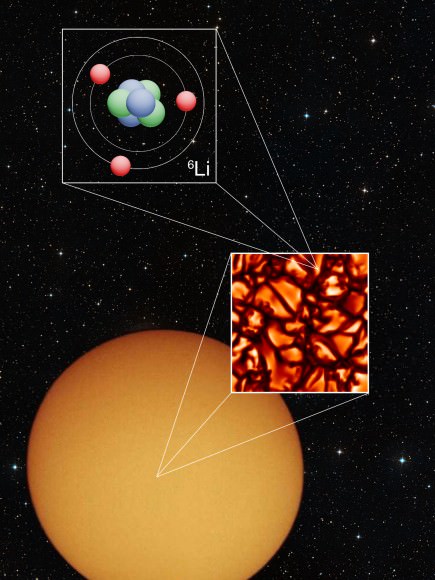Observations of the kaboom that built our universe — known as the Big Bang — is better matching up with theory thanks to new work released from one of the twin 33-foot (10-meter) W.M. Keck Observatory telescopes in Hawaii.
For two decades, scientists were puzzled at a lithium isotope discrepancy observed in the oldest stars in our universe, which formed close to the Big Bang’s occurrence about 13.8 billion years ago. Li-6 was about 200 times more than predicted, and there was 3-5 times less Li-7 — if you go by astronomical theory of the Big Bang.
The fresh work, however, showed that these past observations came up with the strange numbers due to lower-quality data that, in its simplifications, created more lithium isotopes detections than are actually present. Keck’s observations found no discrepancy.

“Understanding the birth of our universe is pivotal for the understanding of the later formation of all its constituents, ourselves included,” stated lead researcher Karin Lind, who was with the Max Planck Institute for Astrophysics in Munich when the work was performed.
“The Big Bang model sets the initial conditions for structure formation and explains our presence in an expanding universe dominated by dark matter and energy,” added Lind, who is now with the University of Cambridge.
To be sure, it is difficult to measure lithium-6 and lithium-7 because their spectroscopic “signatures” are pretty hard to see. It takes a large telescope to be able to do it. Also, modelling the data can lead to accidental detections of lithium because some of the processes within these old stars appear similar to a lithium signature.
Keck used a high-resolution spectrometer to get the images and gazed at each star for several hours to ensure astronomers got all the photons it needed to do analysis. Modelling the data took several more weeks of work on a supercomputer.
The research appeared in the June 2013 edition of Astronomy & Astrophysics. You can check out the entire paper here.
Source: Keck Observatory


Ha, I had to smile a bit. I’m just a layman, but I knew the lithium results were wacky. A year ago I would have been jumping up and down in my armchair now.
But since I saw this article by a cosmologist on the Planck results, I felt reasonably confident that remaining tension between big bang and observations was likely due to resolution problems:
[Planck has not yet released all polarization data, but has released some which are ready.]
“That curve is the unique prediction from analysing Planck’s temperature data. There are no free parameters in defining those red lines. Once the temperature data is analysed, we can make an unchangeable prediction for what the polarisation should look like. The fact that the red line goes straight through the blue data points is absolutely remarkable. However, if one believes in the big bang and standard cosmological model, this is all that could have happened. If one doesn’t believe in the big bang, then not only is there no reason to suspect that the CMB exists, or that it is polarised, but certainly not that the way the polarisation averages on particular angular scales should look like that.”
Meaning Planck has made big bang into a simple observation.
The multiverse theory of space, or why we don’t need dark energy and dark matter – http://youtu.be/t80qywmnADM